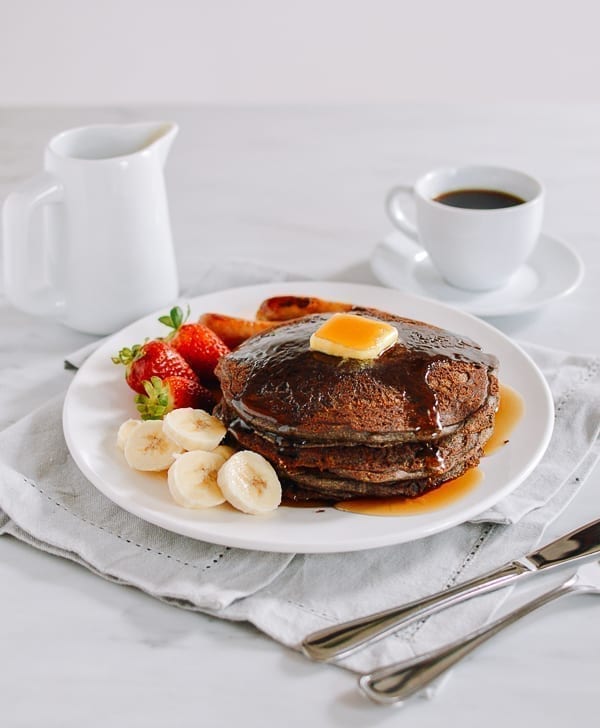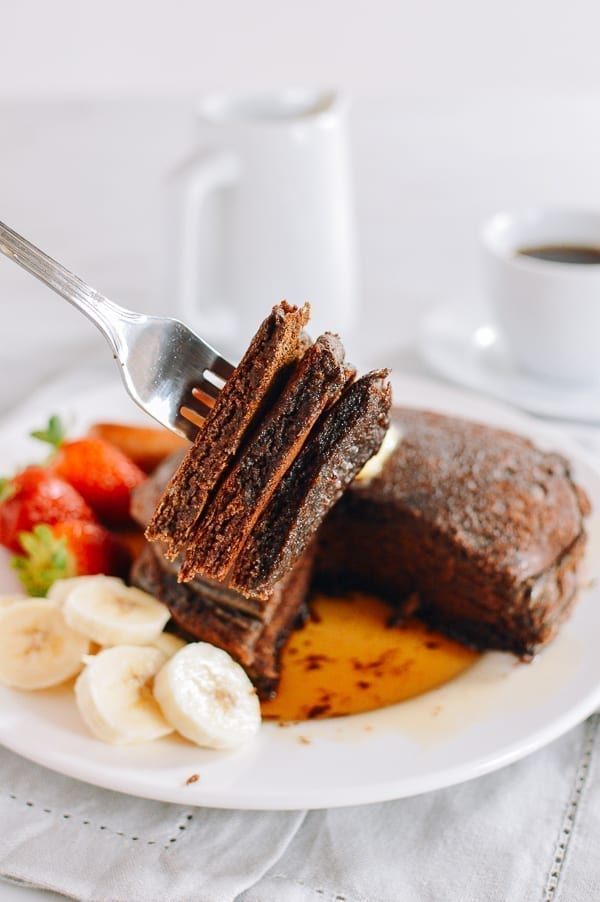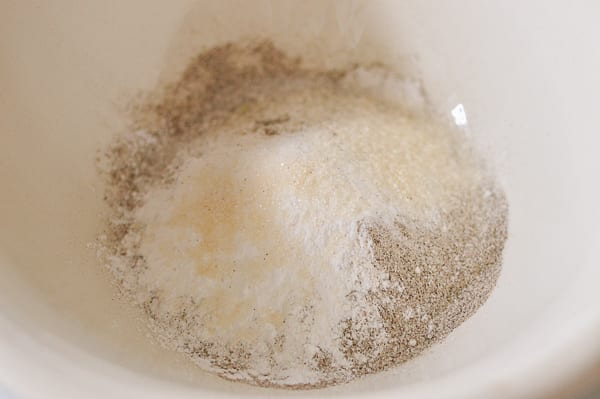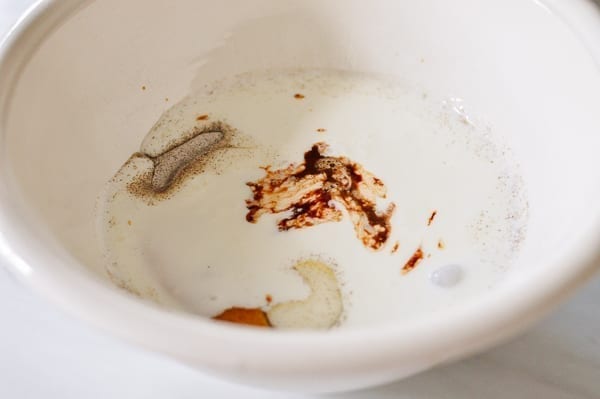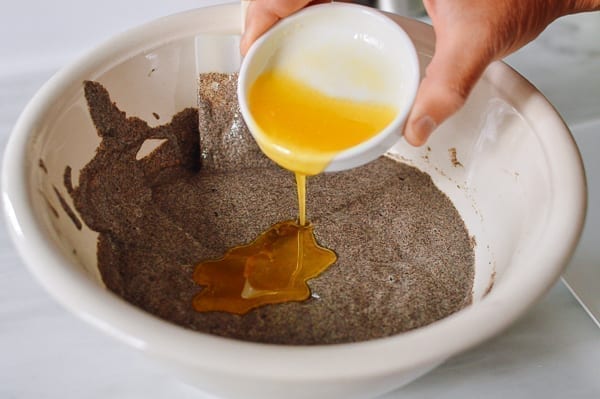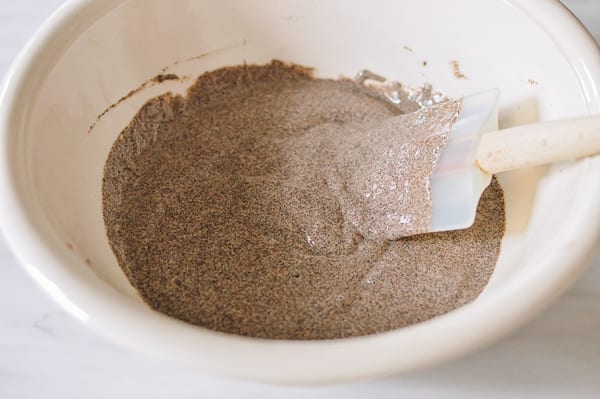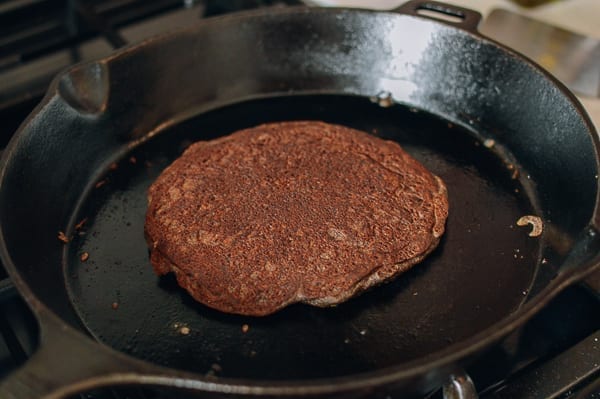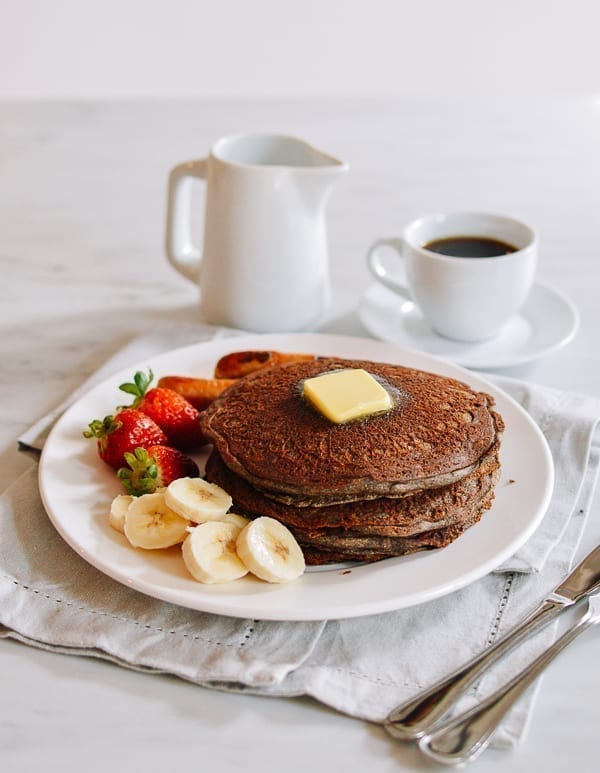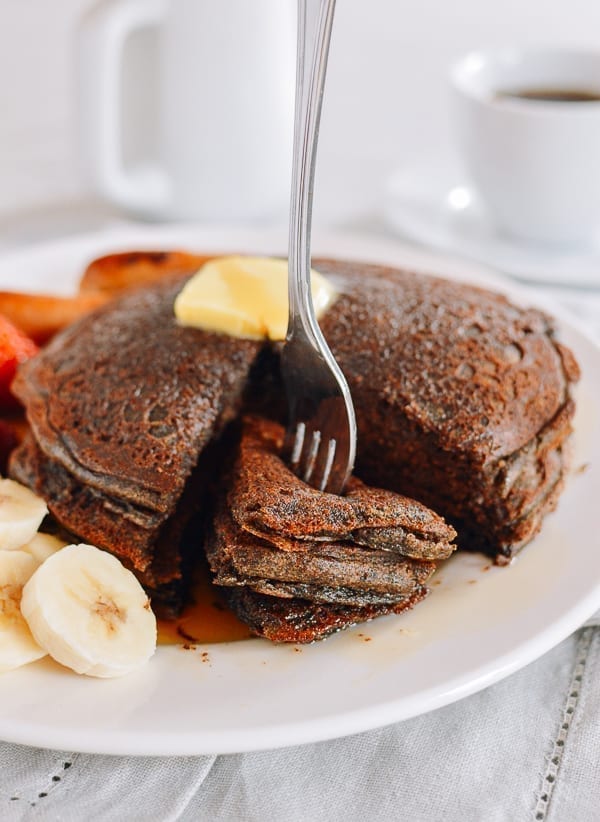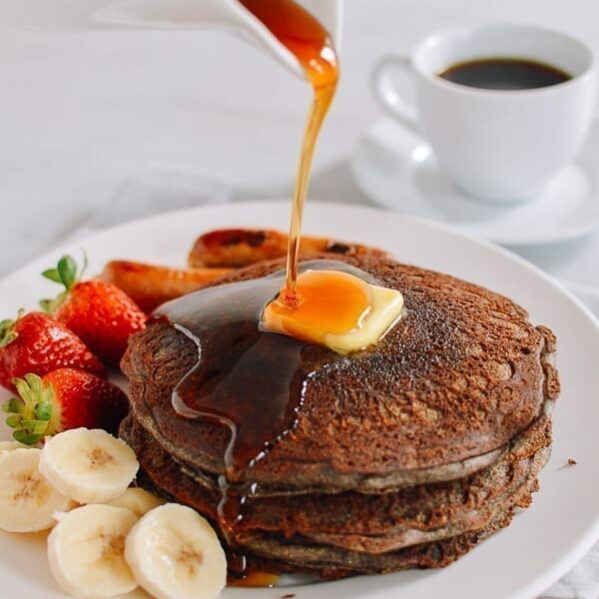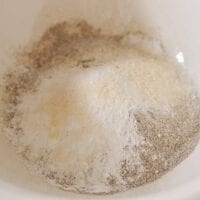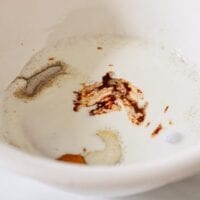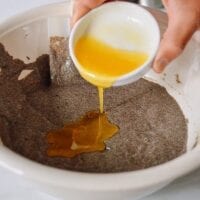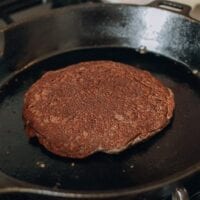Why Try Buckwheat Pancakes?
Of course, I enjoy a good traditional flapjack (over the years, our family has collected our go-to recipes for Apple Cider Pancakes, Peach Pancakes, and Blueberry Pancakes). But these Buckwheat Pancakes are a great way to switch up your usual morning fare. Buckwheat is rich in dietary fiber, with a slightly lower glycemic index than whole wheat. It is also packed with protein and antioxidants, which has led some to classify it as a superfood! If you’re looking for a nutritious breakfast option for yourself or the kids, these pancakes might be just the ticket. Buckwheat pancakes are not only nutritious, they are also delicious! Buckwheat has a nice nutty flavor that’s perfect in a pancake—great with maple syrup and a generous pat of melted butter. One of the first comments from the family after trying Buckwheat Pancakes for the first time was how tasty they were despite the “health” factor. While I consider myself a somewhat healthy eater (though I do enjoy a good heaping bowl of pork belly), I’m not one for eating healthy food only for the sake of being healthy! It has to taste good, and the taste buds don’t lie!
What Is Buckwheat?
Buckwheat is quite different from common wheat. It is not a grass plant (aka a cereal plant), but a plant related to rhubarb and sorrel with a grain-like seed––fagopyrum esculentum for you discerning plantheads. As for the taste, you’re probably most familiar with buckwheat via soba noodles (soba actually means both “buckwheat” or “buckwheat noodle” in Japanese). Soba noodles are brownish gray, and have a nuttier flavor than a white noodle. The same is true for pancakes made with buckwheat flour—they have a nutty, rich, and earthy flavor. You can find buckwheat flour (organic is also available) at most supermarkets these days. When we can’t find it, we get our buckwheat flour online.
Buckwheat IS Gluten-Free!
Yes, despite the inclusion of “wheat” in the name, buckwheat and buckwheat flour are gluten-free. Buckwheat is a grain-like seed of a plant rather than an actual grain, making it safe for those with gluten sensitivity and celiac disease. Just ensure that the buckwheat was processed in a wheat-free environment. If you choose to only use buckwheat flour in this pancake recipe (as opposed to substituting some wheat flour), they are 100% gluten-free.
How to Make Buckwheat Pancakes: Key Tips!
We want your first taste of Buckwheat Pancakes to be a good one. A few tips for success:
Eggs and buttermilk should be at room temperature, and the butter shouldn’t be hot when you add it to the batter. Buttermilk yields a better pancake, but if you don’t have any, use scant 1 ⅓ cup whole milk stirred with 4 teaspoons fresh lemon juice or white vinegar. Allow the mixture to stand 10 minutes before adding to the batter. If you like a little freshness and additional flavor, add 1 teaspoon of fresh lemon zest to your buckwheat pancake batter. Make sure your baking powder and baking soda are fresh for maximum rise! If you don’t have a strict gluten-free diet, using ½ cup buckwheat flour and substituting the other ½ cup with whole wheat flour can yield a fluffier pancake. For best results, use a digital scale for measurements. There is a lot of variation when you scoop or pack flour, and for this small batch, measurements are especially important. Let your batter rest. It takes time for the buckwheat flour to absorb moisture. Using a cast iron pan, non-stick pan, or griddle is recommended for even browning and cooking.
Buckwheat pancake Recipe Instructions
In a large bowl, whisk together 1 cup buckwheat flour (or mixture of buckwheat and whole wheat flour), 1 tablespoon baking powder, 1 teaspoon baking soda, 1 tablespoon sugar, and ¼ teaspoon salt. Add the wet ingredients—the egg, 1⅓ cups buttermilk, and 1 teaspoon vanilla. Stir until combined, but don’t overmix! Let the batter stand for 10 minutes. In the GIF below, you can see what the consistency should look like: Next, fold in 2 tablespoons melted butter until just combined. Let stand for another 10 minutes. The batter should thicken slightly as the dry ingredients absorb liquid. Heat your griddle or cast iron skillet over medium heat. Make sure to heat the pan thoroughly. When butter sizzles, but doesn’t turn brown too fast, you’ll know the heat is correct. Use a portion of the extra 3/4 tablespoon of butter by brushing some of it in the center of the pan surface. Pour ⅓ cup of batter for each pancake (you can also make them larger or smaller as you prefer). Cook until the bottom is browned and bubbles form on the top of each pancake (about 2 to 2½ minutes). Flip the pancake once. Let cook until it springs back when pressed in the center (about 2 minutes). Transfer to a serving plate. Repeat until you’ve used all of the batter. To make a banana version, you can mash 1 large banana, and fold it into the batter before cooking. Serve buckwheat pancakes warm topped with butter, maple syrup, and maybe a little fresh fruit on the side! A couple links of breakfast sausage don’t hurt either.
